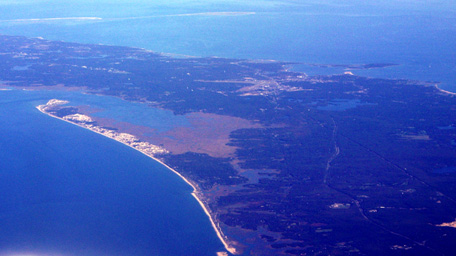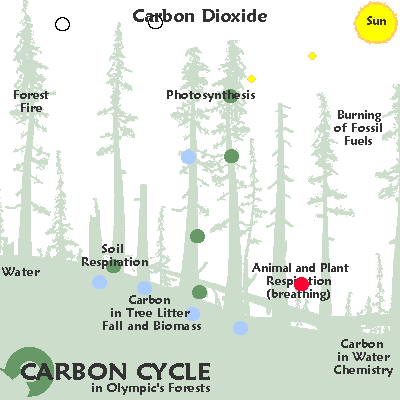

Nauset marsh is created by barrier dunes that trap Massachusetts Bay waters on the Cape Cod peninsula and an African elephant feeding on brush.
The biosphere
as a game of life
The game of life is played by every
participant living on the planet.
Landscapes, plants, fungi, bacteria and animals all play important but different "positions" in this game where strategy is more important than winning.
- The biosphere is the name we give to the entire living world. The members of the living world are varied beyond imagination from the deepest sea trenches to the coldest ice fields, where there is life thee is a biosphere.
- The biosphere is more than a place it is also an interlocking set of functions.
- These functions may be thought of as a game played amongst all the members of the living world.
- This game board is unique in that it is actually created,
assembled daily if you will, by the reproductive members of the population.
- The reproducing members of the population establish the
contours of the playing field on which all the trillion, quintillion or
sextillion numbers of players participate in the game every day.
- The game is responsible for ecological functions that generate ecological
services. Many of these ecological services contribute to the sufficiency of the playing field to
handle such a large number of players.
- The object of the game is to keep running faster and faster
just to stay in the same place.
- Biologists call this strategy "natural selection," but what selection amounts to is the capacity to keep ahead of these changing conditions and overcoming obstacles to living.
- The game's objective is demanded by the fact that the faster
reproducing organisms establish the broad contours of the playing field
to which the slower producing organisms must adapt, if they are to continue
in the game.
- Unlike games that have winners and losers the game
of the biosphere is won by every player optimizing the resources
that are part of the biophysical conditions that make the biosphere habitable.
If the carrying capacity
of the playing field is exceeded, everyone loses who is playing the game.
 If the assimilative capacity of the air, water, or other essential
nutrient driven ecological services is exceeded the game is compromised and
the number of players may --and often is-- reduced in number and variety. The animation here shows a cartoon of how carbon dioxide, for example, moves through the participants in the game of life that reside in an Olympic Peninsula rain forest in the Pacific Northwest.
If the assimilative capacity of the air, water, or other essential
nutrient driven ecological services is exceeded the game is compromised and
the number of players may --and often is-- reduced in number and variety. The animation here shows a cartoon of how carbon dioxide, for example, moves through the participants in the game of life that reside in an Olympic Peninsula rain forest in the Pacific Northwest.
When the game is compromised it is up to the dominant players
to repair the assimilative capacity–or the ability of the game board to tolerate
all of the players–based on the existing rules and objectives of the game.
Restoring the assimilative
and carrying capacities of the game board is done by teams of bacteria,
fungi, plants and animals working together by revegetating wetlands, planting
forests, restocking and restoring stream fisheries, lakes, or re-nourishing sources of
open space, air, and water such as underground aquifers, aquifer recharge areas,
or watersheds.
To make the earth function well
and optimally for all its creatures is the ultimate goal of the game we
are engaged in.
places
| places are? | places
change



 If the assimilative capacity of the air, water, or other essential
nutrient driven ecological services is exceeded the game is compromised and
the number of players may --and often is-- reduced in number and variety. The animation here shows a cartoon of how carbon dioxide, for example, moves through the participants in the game of life that reside in an Olympic Peninsula rain forest in the Pacific Northwest.
If the assimilative capacity of the air, water, or other essential
nutrient driven ecological services is exceeded the game is compromised and
the number of players may --and often is-- reduced in number and variety. The animation here shows a cartoon of how carbon dioxide, for example, moves through the participants in the game of life that reside in an Olympic Peninsula rain forest in the Pacific Northwest.